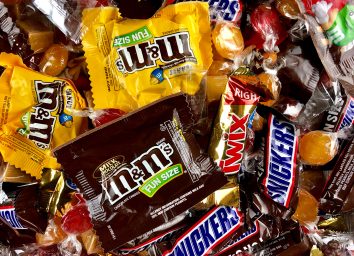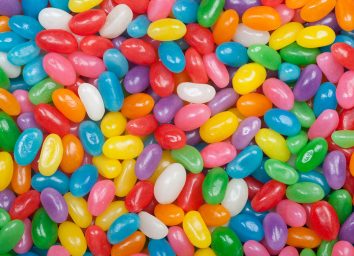19 Candy Bars to Always Leave on Grocery Store Shelves

When you think of your favorite candy bar, you probably recall childhood memories like trick-or-treating or begging your parents for the candy while checking out at the grocery store. Candy bars are obviously no health food, which is why they were such a treat as a kid and still are to this day. Unfortunately, you might not realize just how detrimental your favorite candy bar can be to your health.
Here are some of the most toxic candy bars on the market, ranked from bad to the absolute worst. May we suggest a fun-sized bar instead? Or perhaps have some oatmeal with delicious toppings? Here’s how 16 famous faces make their oatmeal a real treat.
100 Grand

Coming in at 200 calories, it’s safe to say these calories are better off being allocated toward a healthy, fueling snack that won’t leave you with a sugar crash a few hours later. The 100 Grand bar has 22 grams of sugar, so if you do decide to indulge, it’s recommended to best overcome a sugar crash by consuming healthy sources of protein.
Reese’s Take 5
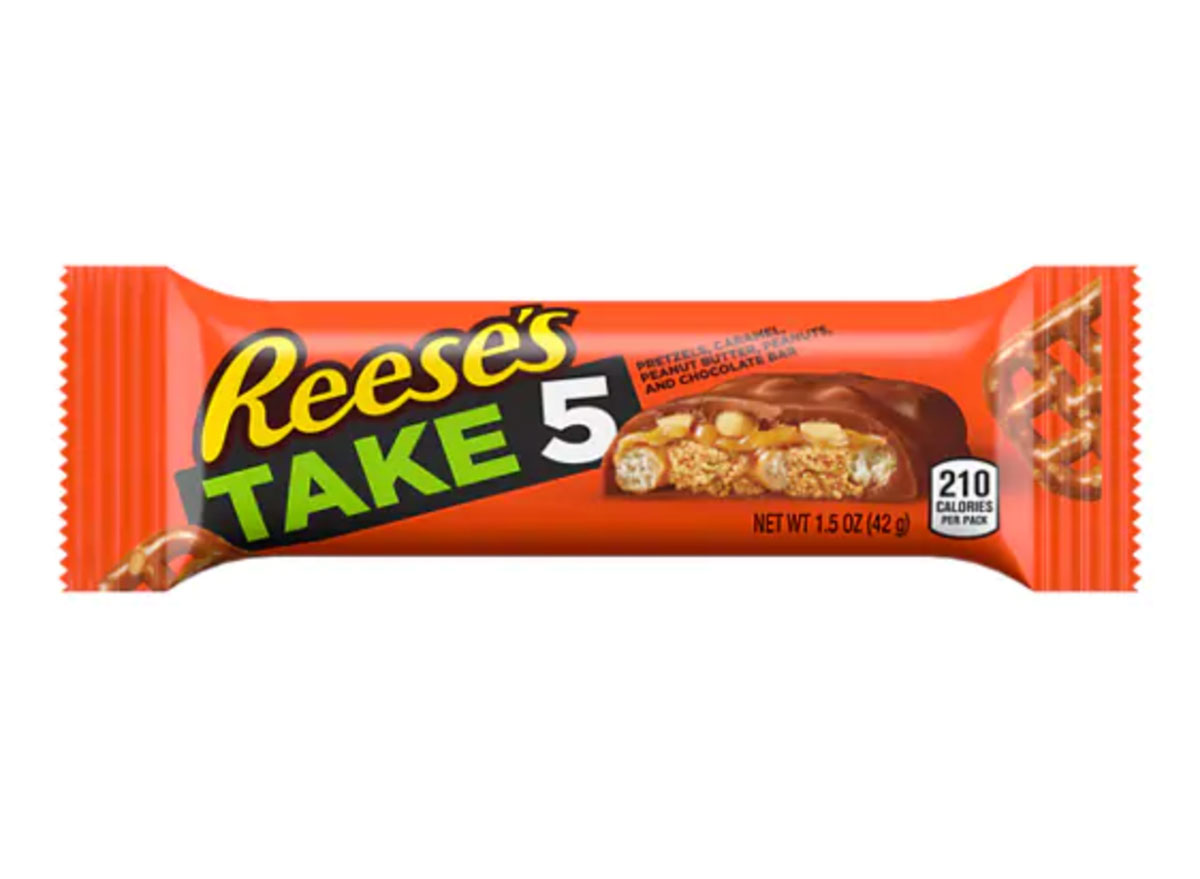
If you aren’t familiar with Reese’s Take 5, this candy bar has five main components—peanuts, peanut butter, pretzels, caramel, and chocolate—that are each high in calories, sugar, fat, or a combination of the three. Although these ingredients can be enjoyed separately in moderation, combining them all into one monstrous candy bar spells disaster for your health.
Kit Kat White
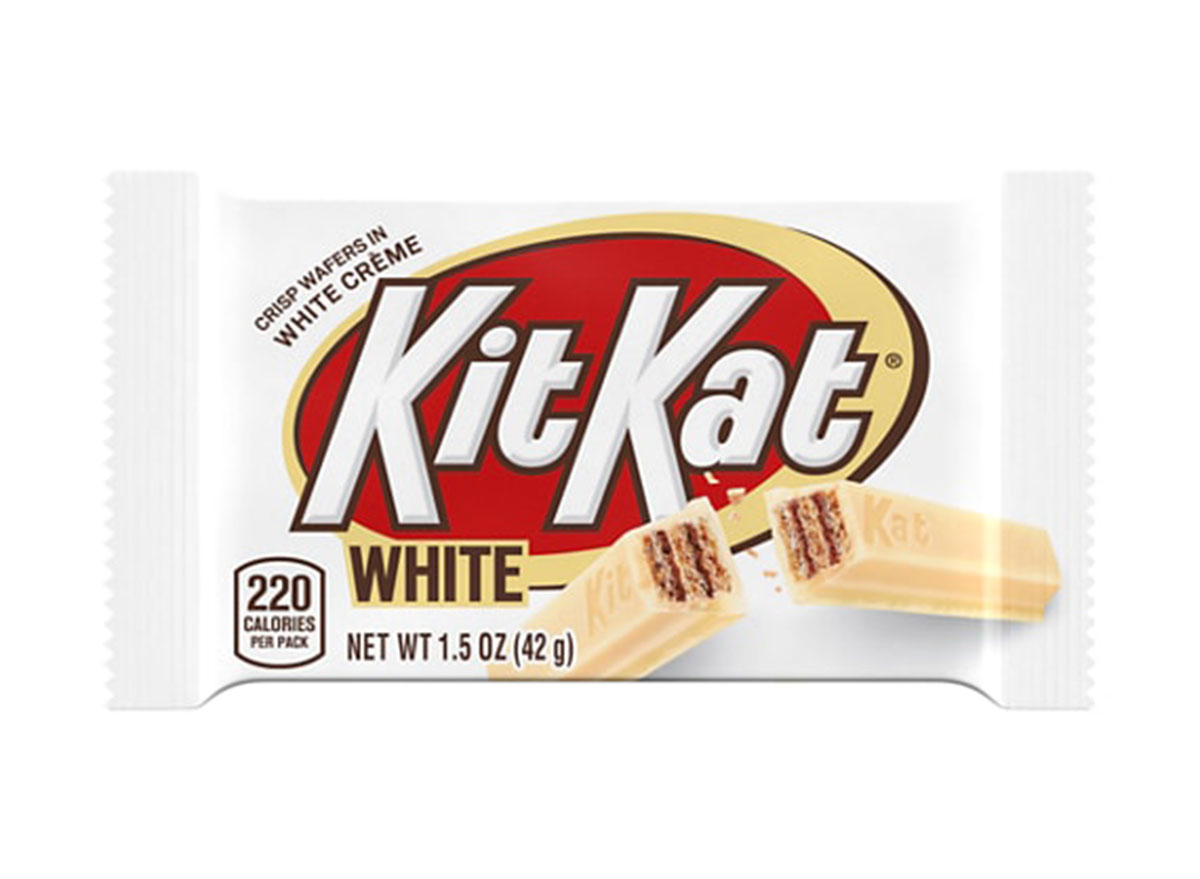
Original Kit Kat bars are already not the healthiest, and the white chocolate version isn’t any better. This option has an even higher calorie count and more saturated fat.
Looking for more helpful tips? Your ultimate restaurant and supermarket survival guide is here!
Heath Bar
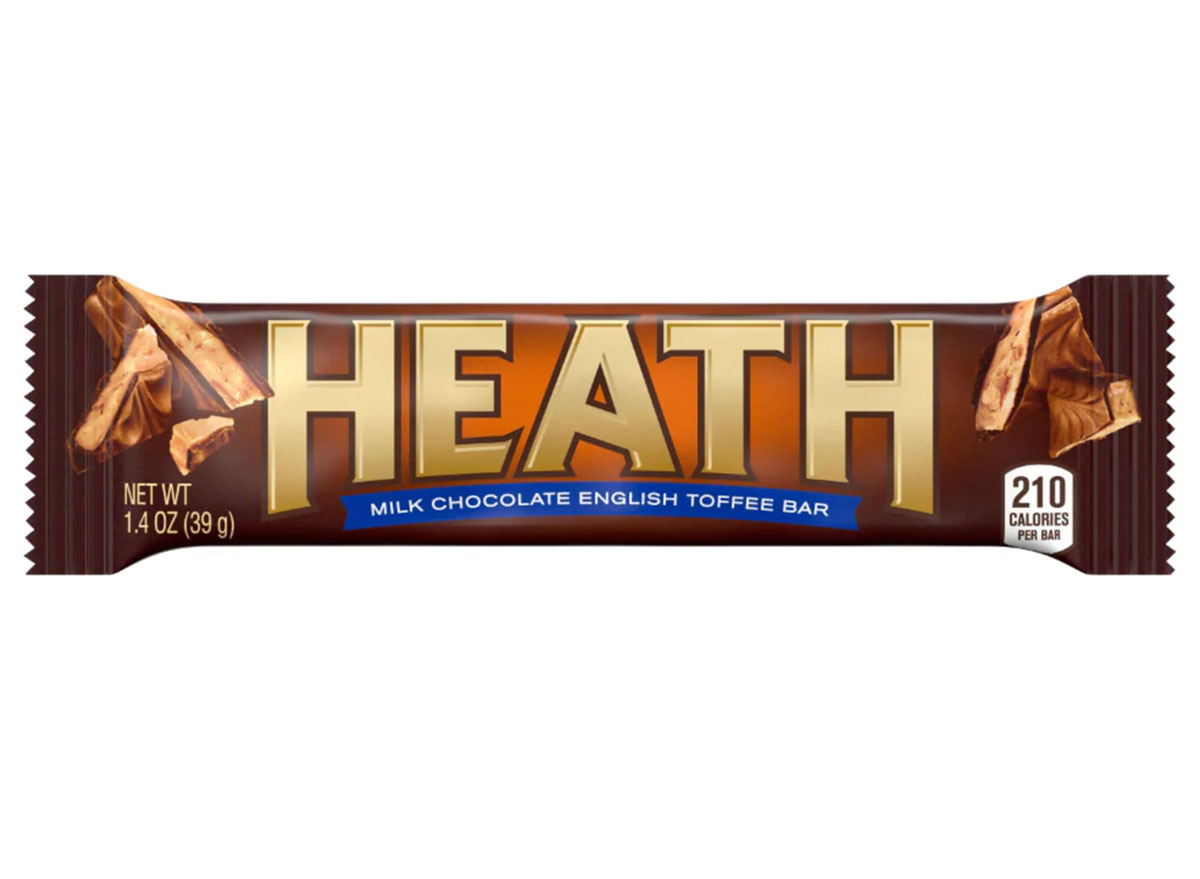
Around since 1914, Heath Bars are a long-time favorite consisting of toffee and milk chocolate. Considering that toffee itself is made with butter and caramelized sugar, it is unsurprising that this candy bar is so high in sugar. Heath Bars also have more fat than several other candy bars on this list. Yikes.
Caramello
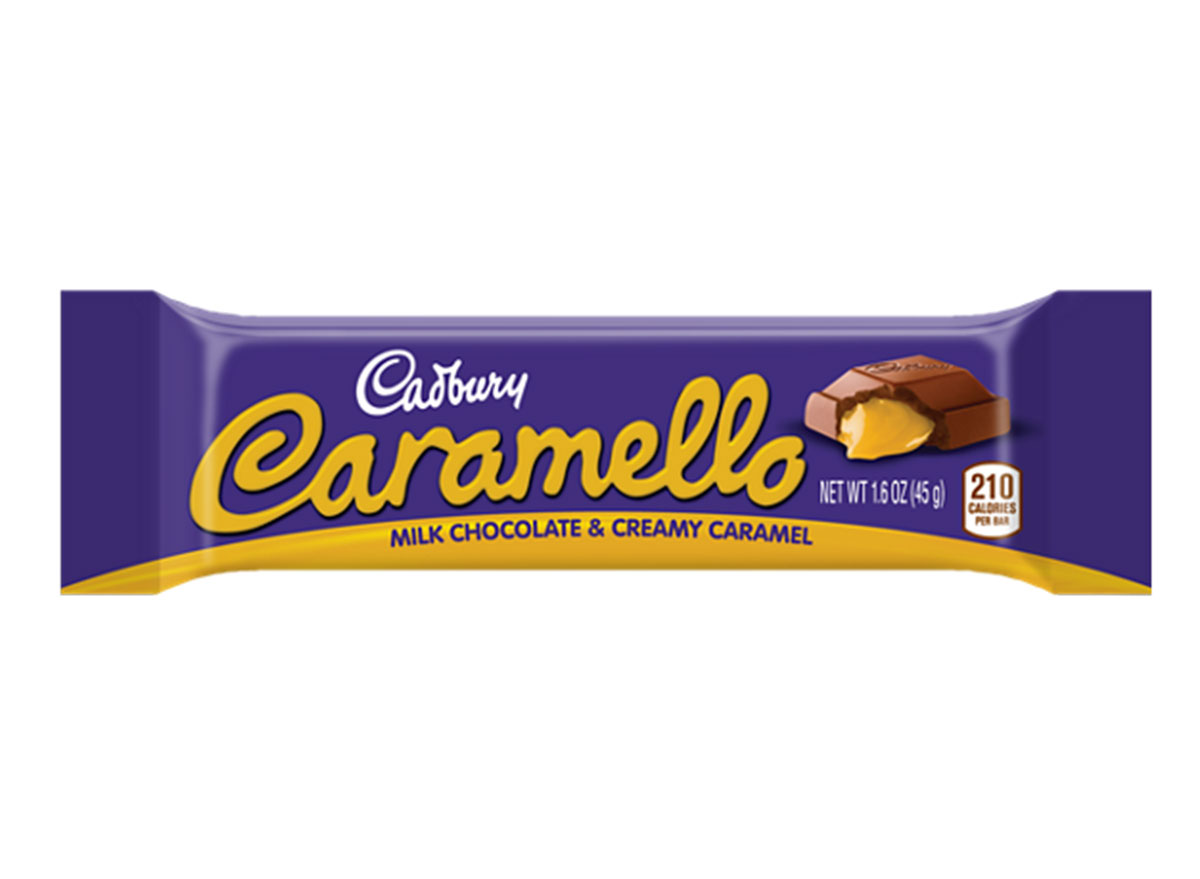
Produced by Cadbury, Caramello was introduced to the candy market in 1968. Unsurprisingly, caramel cloaked in a thick layer of chocolate is far from good for you.
Almond Joy
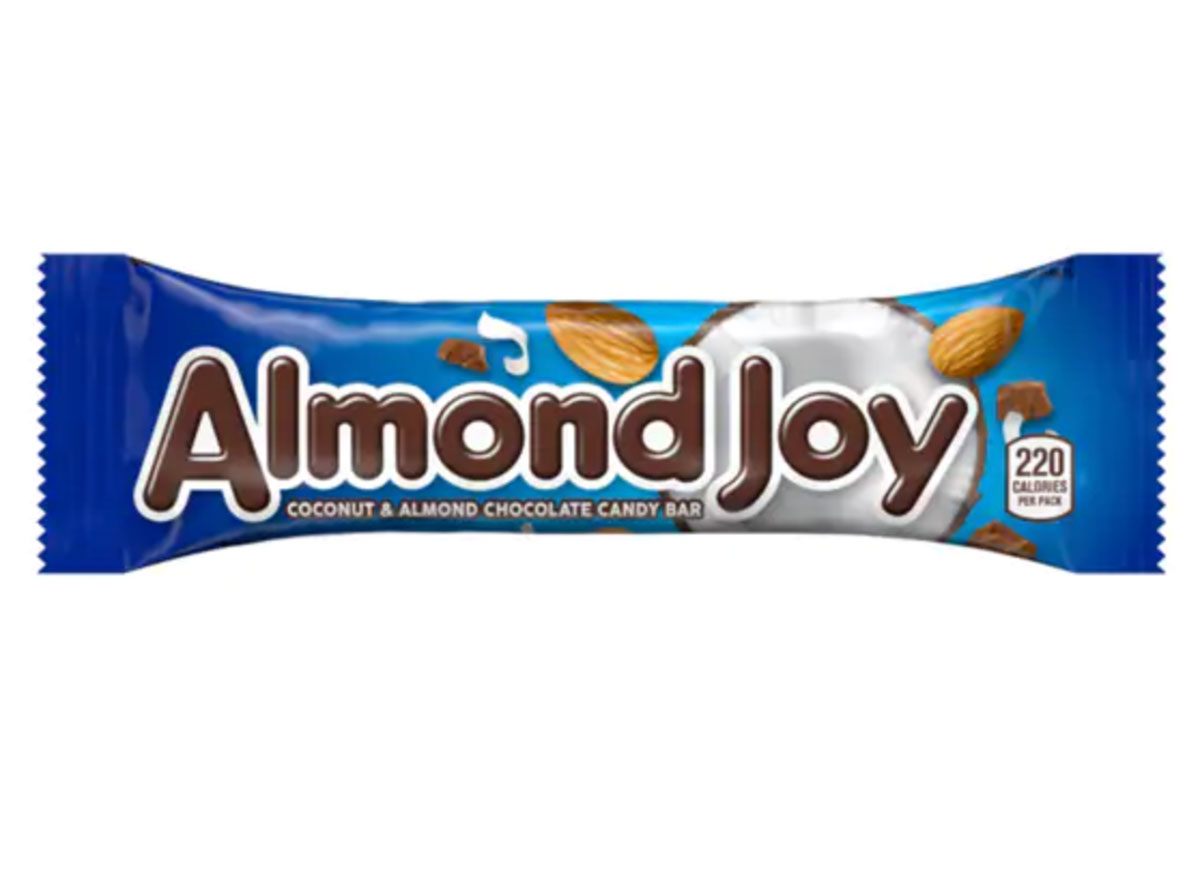
Almond Joy was introduced in 1948 as a spin-off to Mounds. Unlike Mounds, Almond Joy is made up of milk chocolate (rather than dark chocolate) and almonds, in addition to coconut. Almond Joy has slightly fewer calories than its counterpart, but it is still not a healthy option.
Hershey’s Original Milk Chocolate
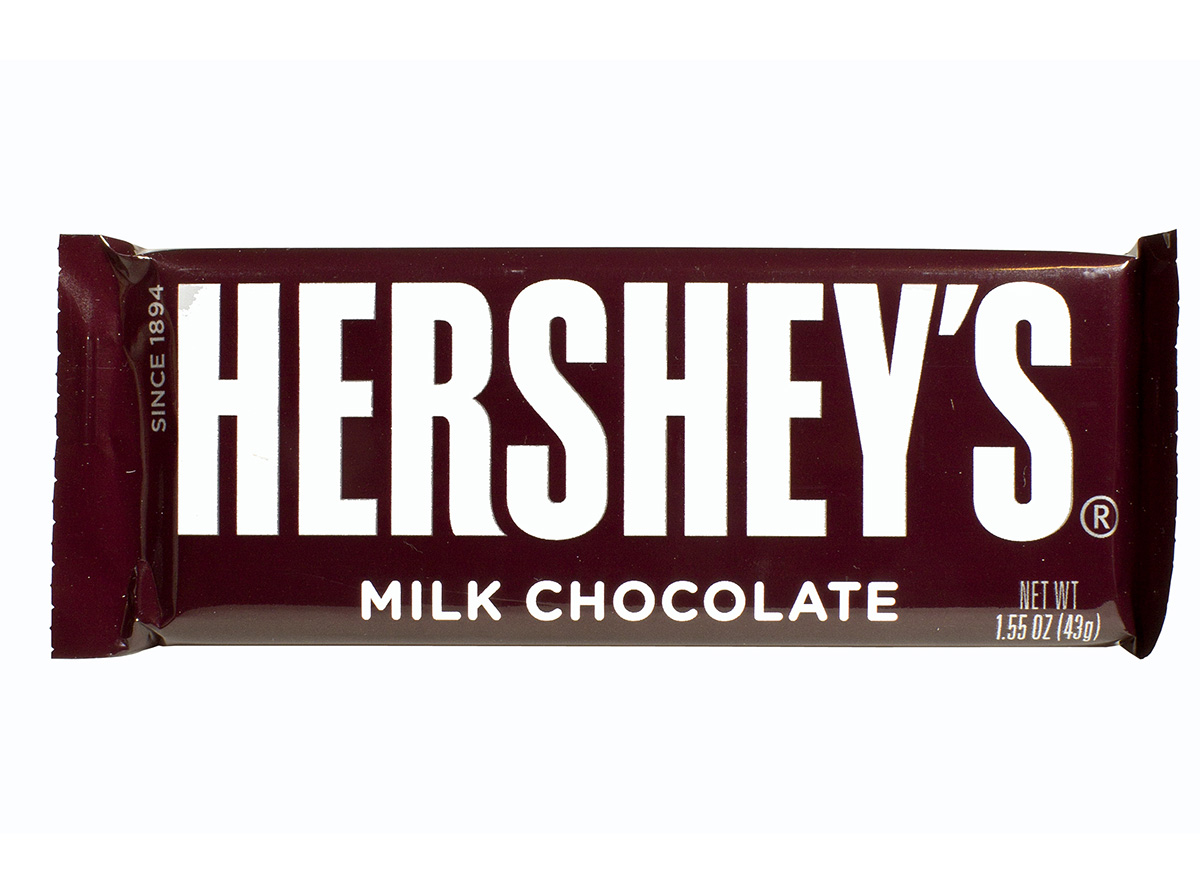
Hershey’s Original Milk Chocolate is an iconic candy bar that first made its debut in 1900. Although it sounds simple and seems like it would be a better option compared to bars with all the bells and whistles, this candy bar still has over 220 calories and 25 grams of sugar.
Whatchamacallit
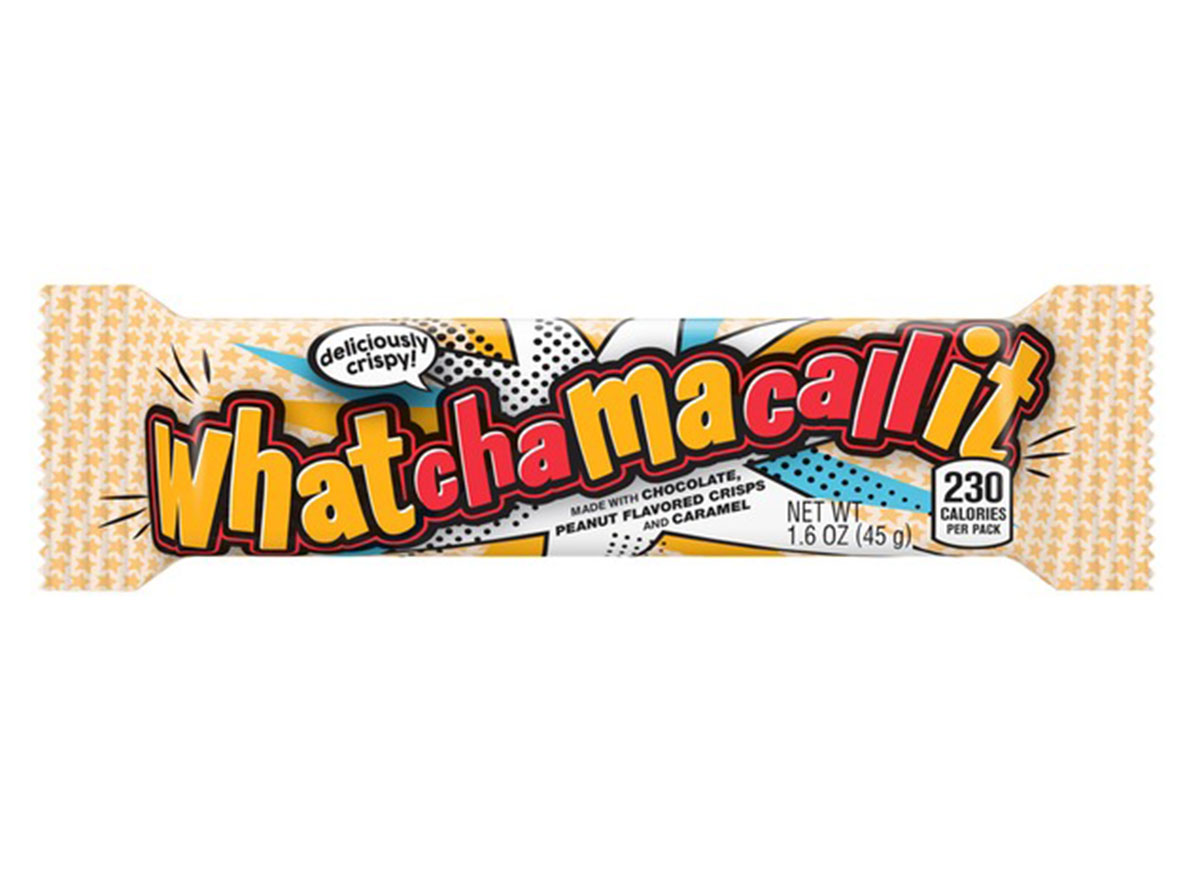
A relatively newer option on the market, the Whatchamacallit, introduced in 1978 and modified to its current formula (with chocolate!) in 1987, is yet another candy bar that has more calories and sugars in a serving than one should eat. A Whatchamacallit actually has more sugar than a Frosted Strawberry Pop-Tart!
Mounds
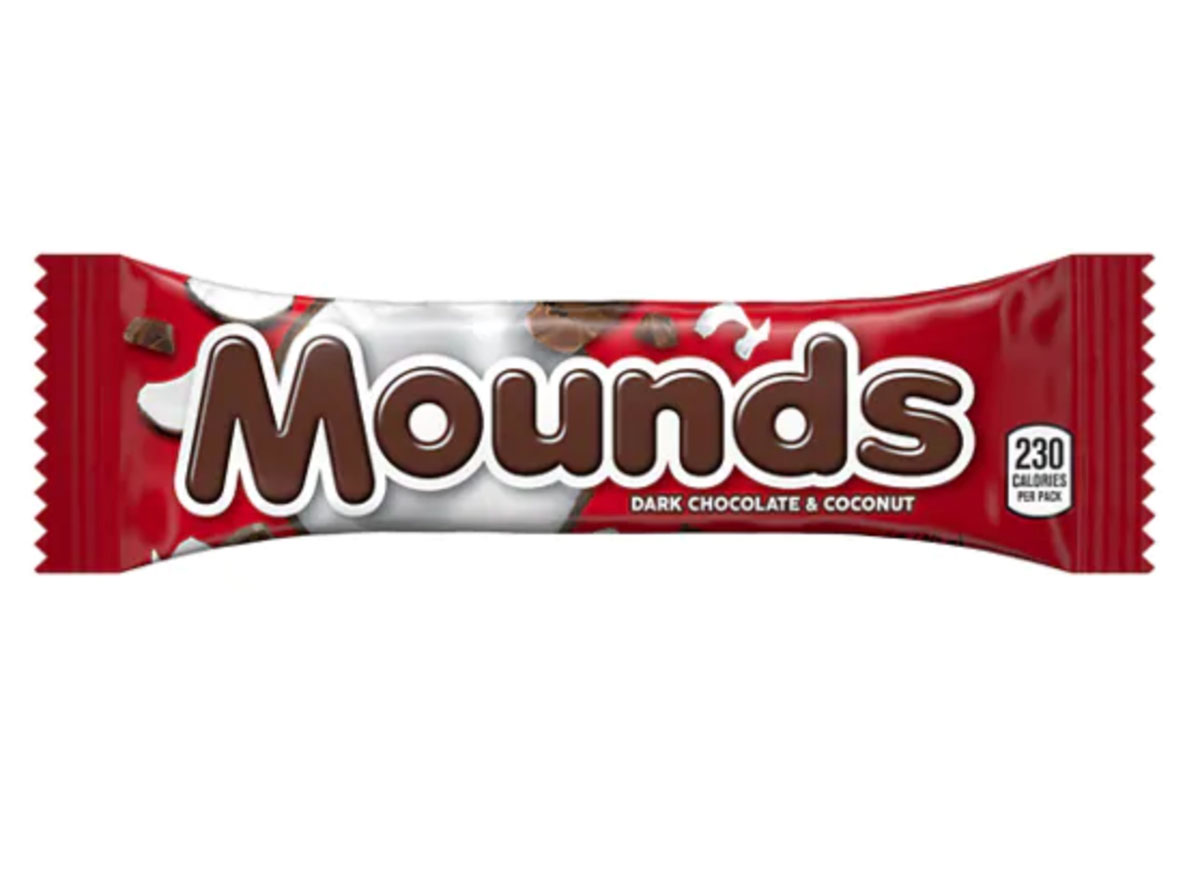
Since 1919, Mounds has delighted many taste buds. On the surface, this combination of dark chocolate and coconut seems like a healthier pick, but it’s still just as loaded with sugar. The ingredients list includes corn syrup, sugar, milk fat, and semi-sweet chocolate, among other ingredients—a far cry from simply dark chocolate and coconut.
Dove Silky Smooth Milk Chocolate Bar
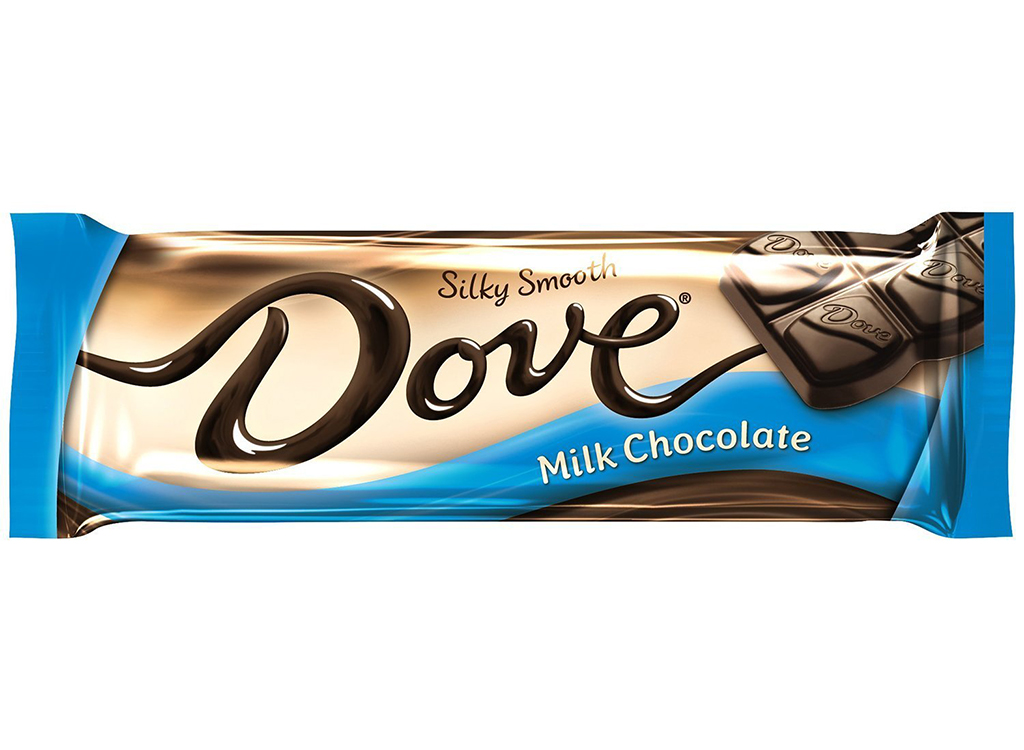
Dove caters more to an adult audience than many other candy bars, but its efforts in sustainability (it is Rainforest Alliance certified) do not detract from its unhealthy qualities: high calories, high saturated fat, and high sugar. Luckily, these bars are cut with smaller squares, so you can break off a couple for a better-for-you portion size.
Crunch
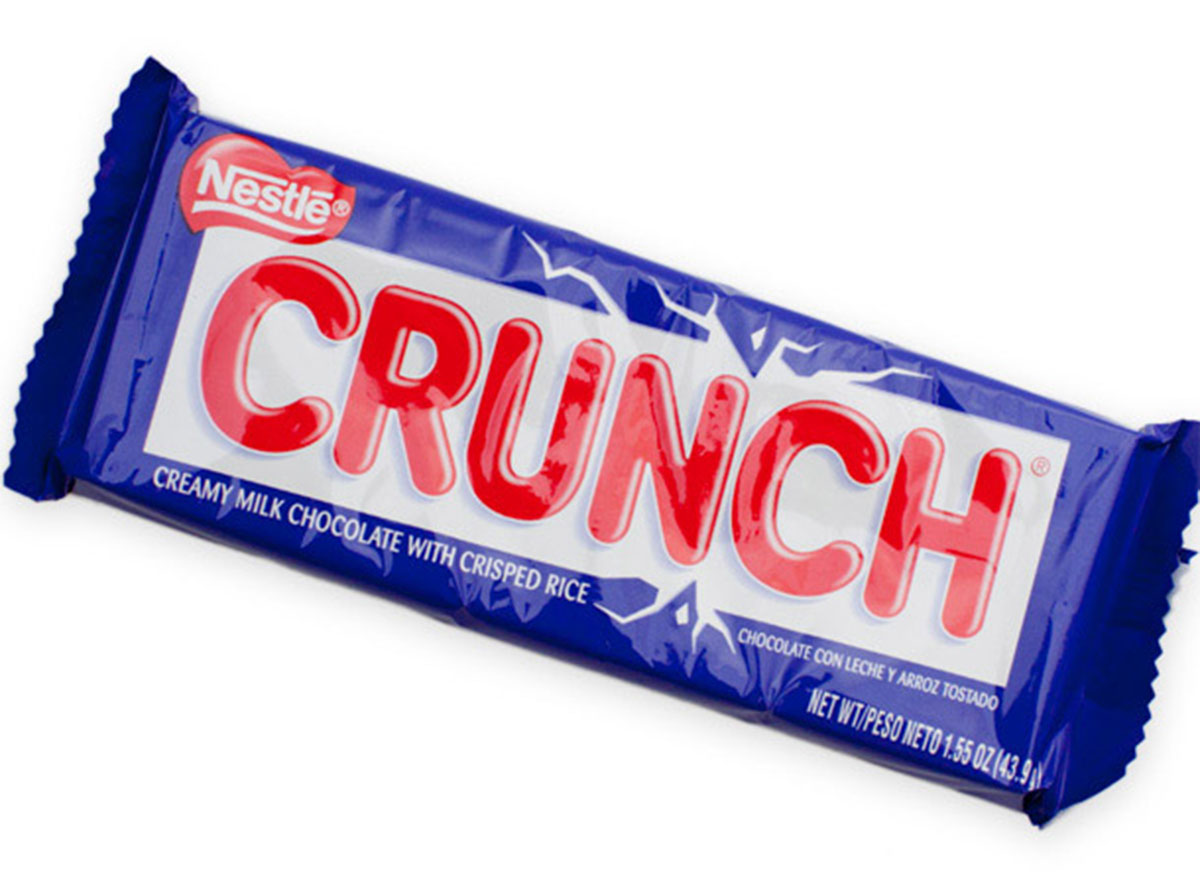
Nestle’s famous Crunch bar has been in production since 1928 and features crisped rice coated in milk chocolate. Despite the simplicity, Crunch is high in both calories and sugar. Luckily, this is another candy bar with a fun-sized option if you are really craving it.
Butterfinger
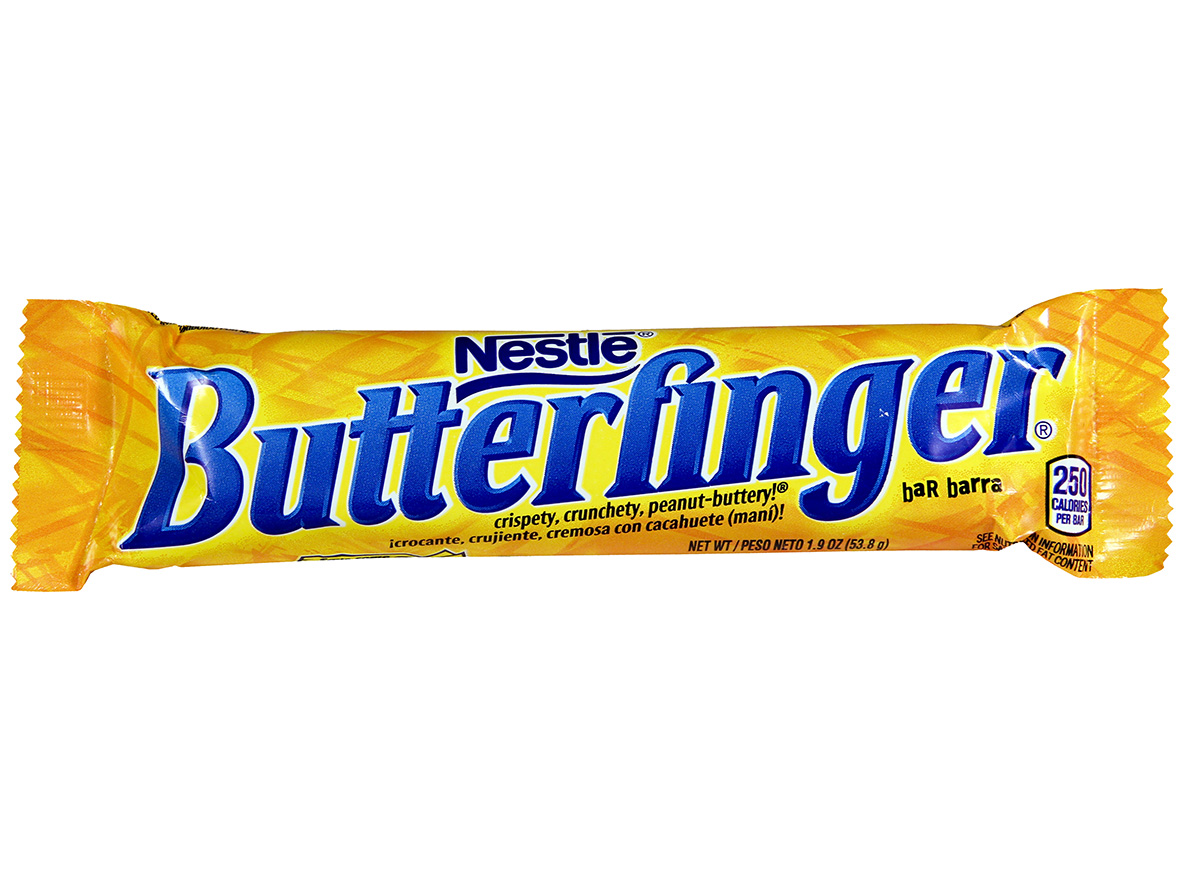
Anything that sticks to your teeth this much has to be filled with sugar, and Butterfinger lives up to the expectation. In fact, the top two ingredients are corn syrup and sugar. The list goes on to mention palm oil, which is concerning for your personal health as well as public and planetary health.
Twix
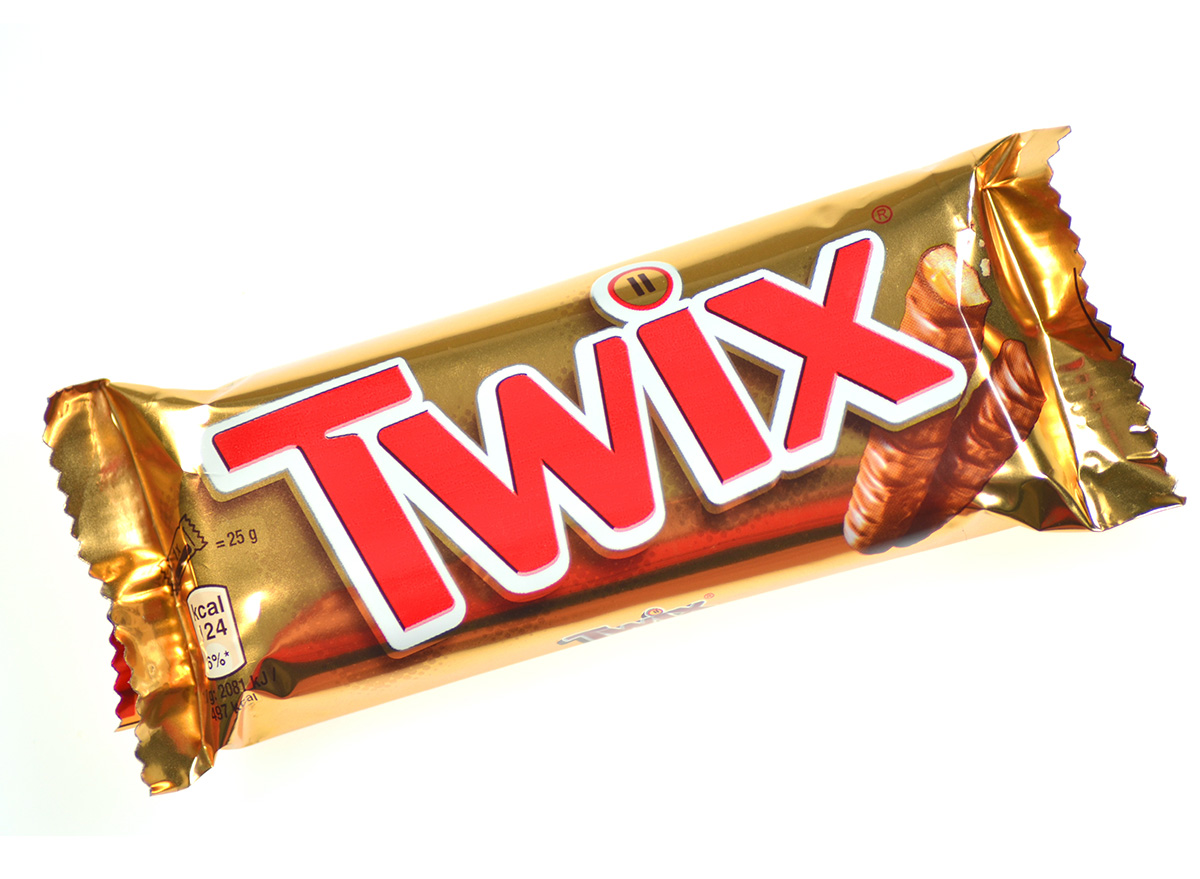
You’re probably familiar with the Left Twix/Right Twix advertising campaign, and you aren’t alone if you’ve just laughed at the concept and eaten both in one sitting. But a full-sized package—Left Twix and Right Twix included—has a high amount of calories and sugar. Depending on your dietary needs, it also includes about 1/4 of your recommended fat intake. Maybe you really should just pick one side…
Snickers
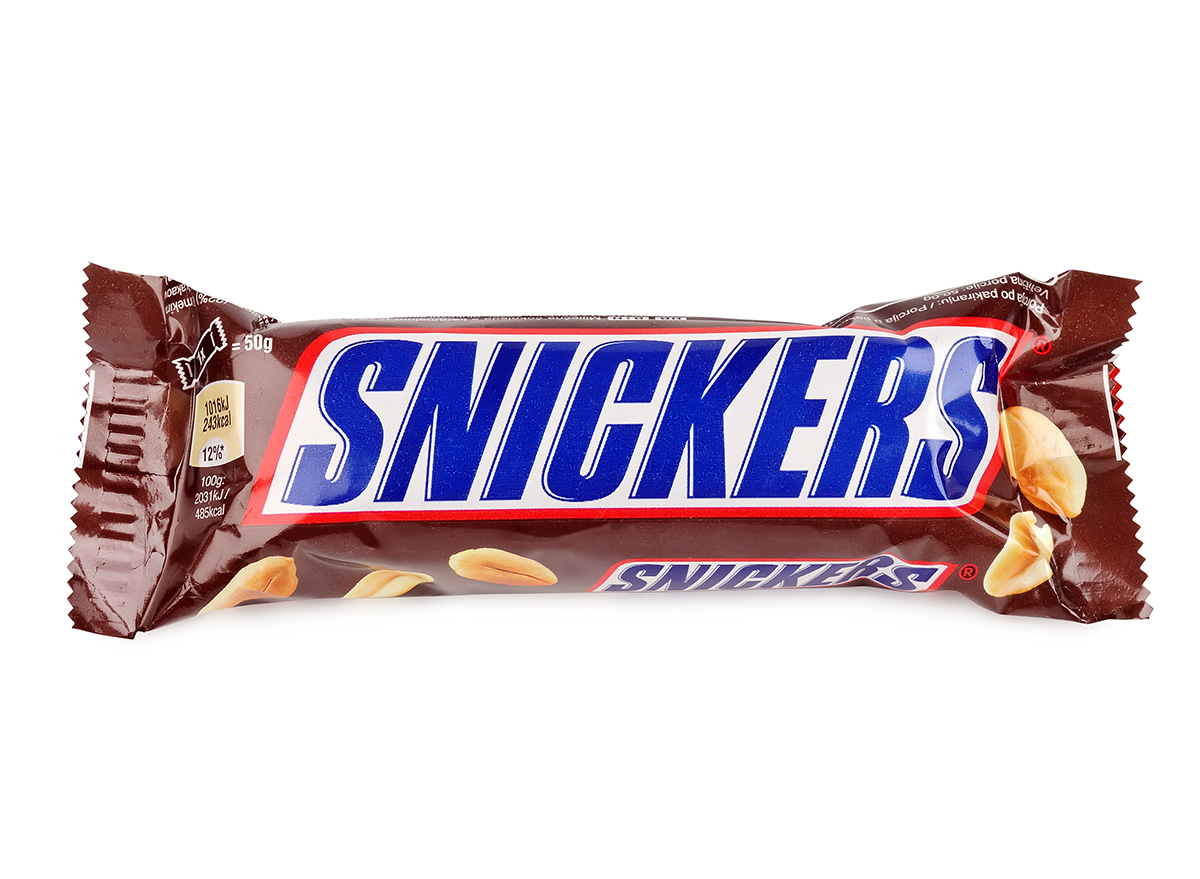
Who can resist the caramel and chocolate concoction that is a Snickers bar? This ubiquitous candy bar is in every trick-or-treater’s bag Halloween night, and it seemingly dominates the candy aisle at the grocery store. But before you grab this candy bar, keep in mind that the high calorie count matched with the high sugar content can really spell trouble for your health.
Mr. Goodbar
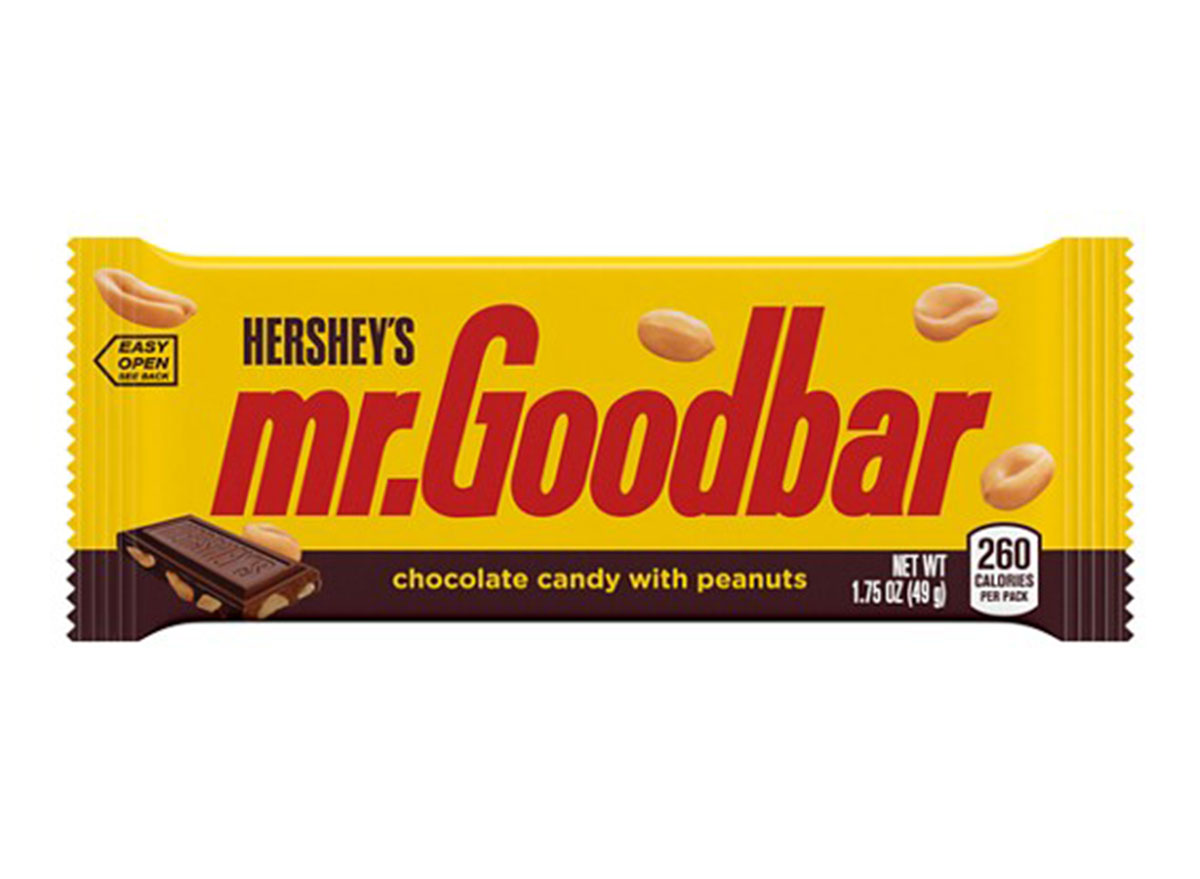
Mr. Goodbar joined the Hershey’s lineup in 1925 and was even marketed as a nutritional lunch option during the Great Depression because it includes peanuts. But even the peanuts pose a health problem—they are coated in fat and fried!
“We’d been experimenting with a peanut bar, peanuts being a popular product with the American people,” explained Samuel Hinkle, developer of Mr. Goodbar, in a 1975 interview. “We decided we’d better use Spanish peanuts rather than Virginia peanuts. We came up with this Spanish peanut, a small round peanut, and we left the little red shell on the outside. We called it roasted, but we really were frying the peanuts in fat and combining them with our milk chocolate.”
At 260 calories per bar, you’re much better off skipping it and munching on a handful of plain peanuts.
Chocolatey PayDay
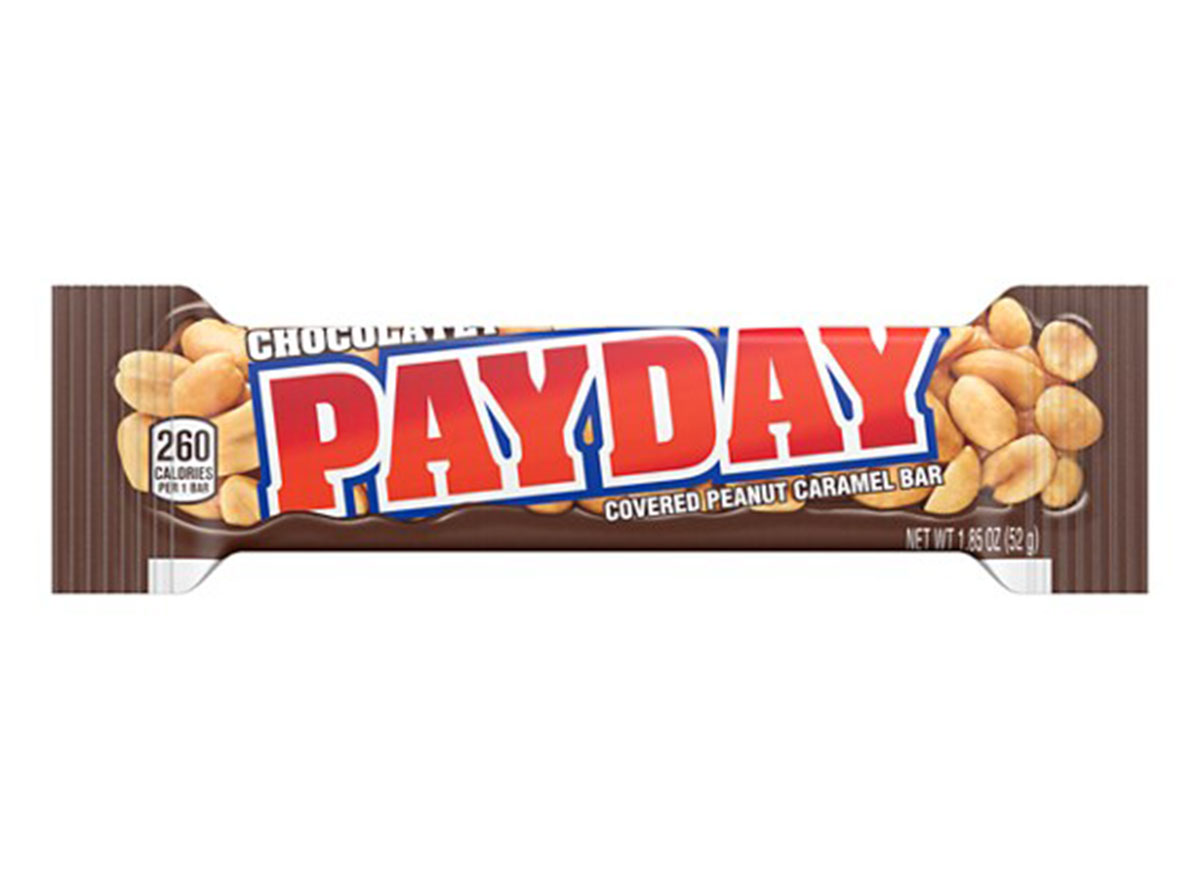
In recent years, companies have been reinventing classic candy bars, but that isn’t always a good thing. PayDay—which has been around since 1932—is a prime example. In 2020, Hershey’s launched a Chocolatey PayDay. The new candy bar adds a chocolate coating—plus 20 more calories and 6 more grams of sugar—to the original candy bar. If you have to choose between the two, stick with the original!
Baby Ruth
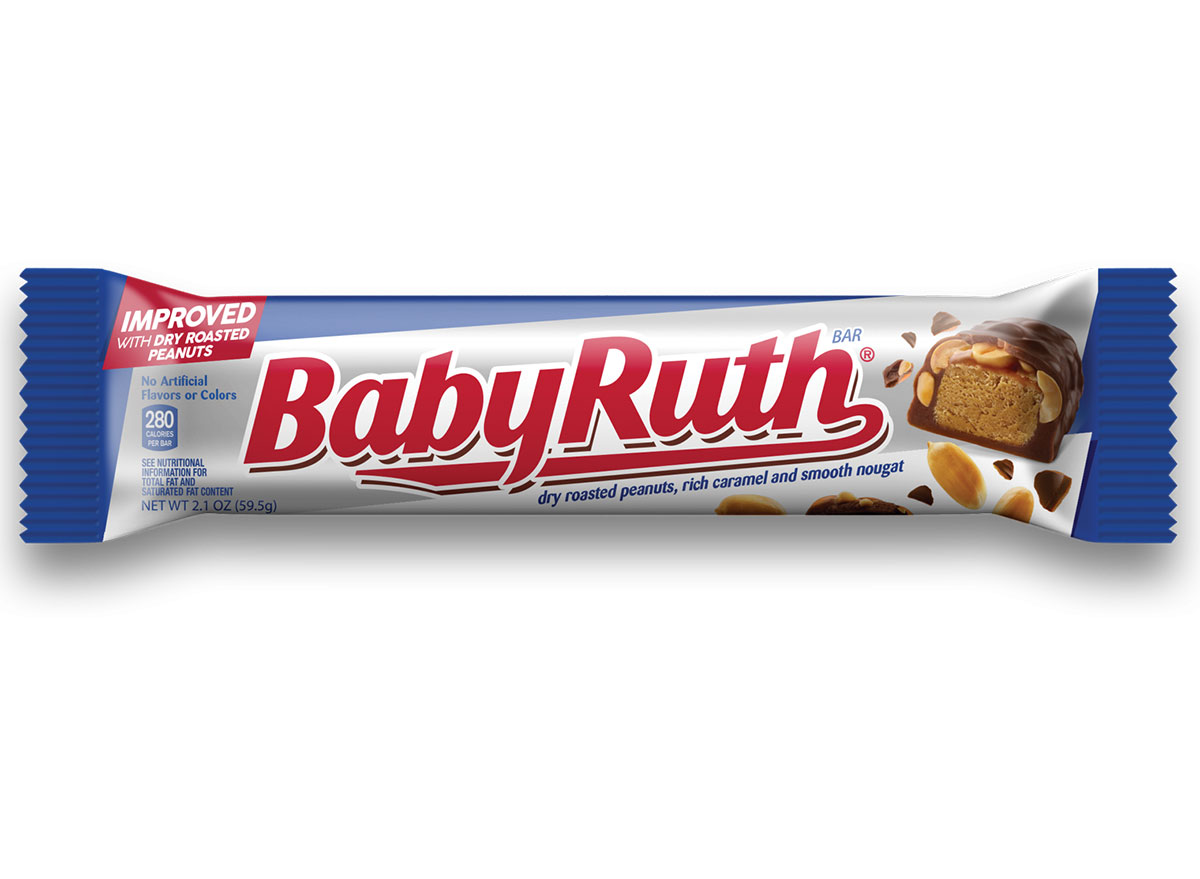
Baby Ruth candy bars have been a fan favorite since 1921. For nearly 100 years, kids and adults alike have enjoyed many a Baby Ruth. But this popular candy bar has one of the highest calorie counts of all candy bars, and it’s definitely not skimping on sugar, either.
Milky Way
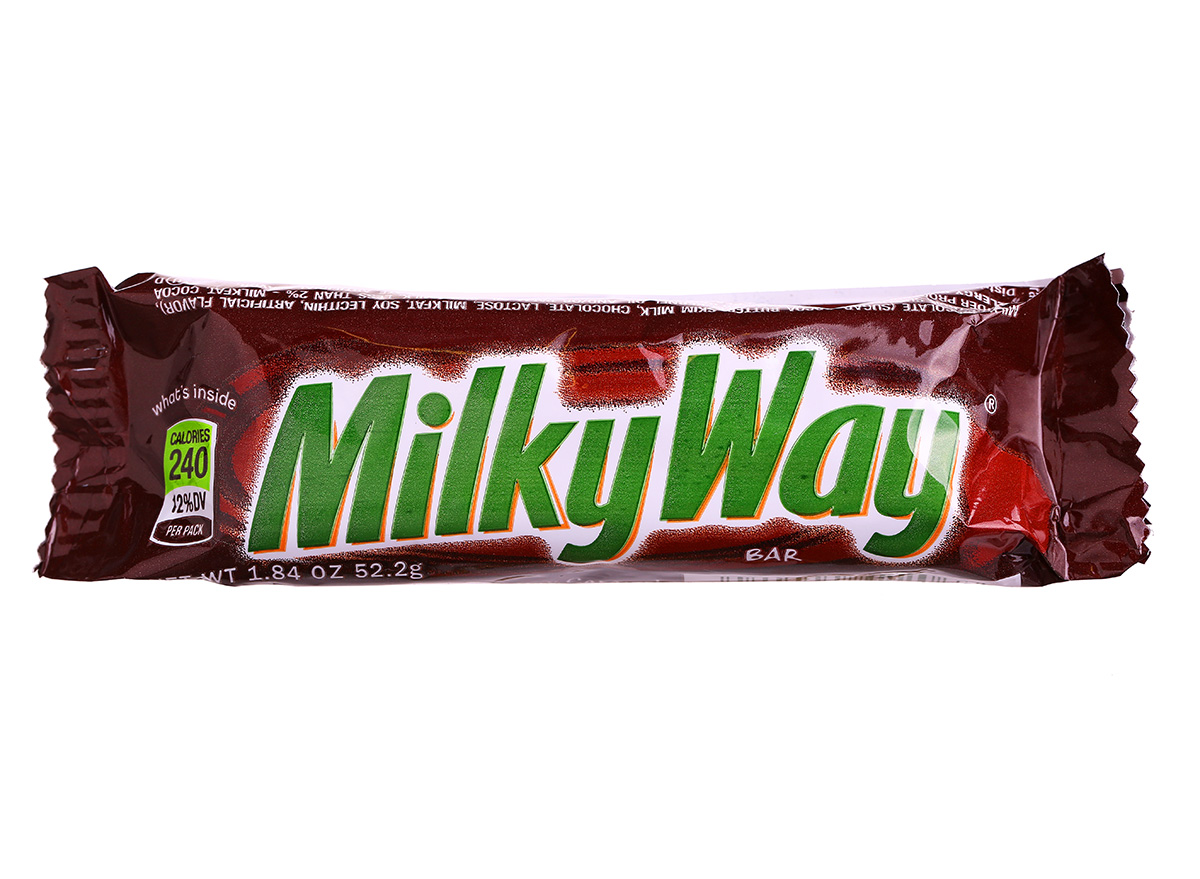
In the candy bar universe, the Milky Way is one of the worst options you can eat. The 31 grams of sugar in this candy bar is three times the amount of sugar you’d find in one glazed donut! According to Harvard Medical School, added sugar can increase your risk of heart disease, and that’s the biggest culprit you’ll find in many candy bars. And even in surprising foods you never thought would be packed with sugar.
3 Musketeers
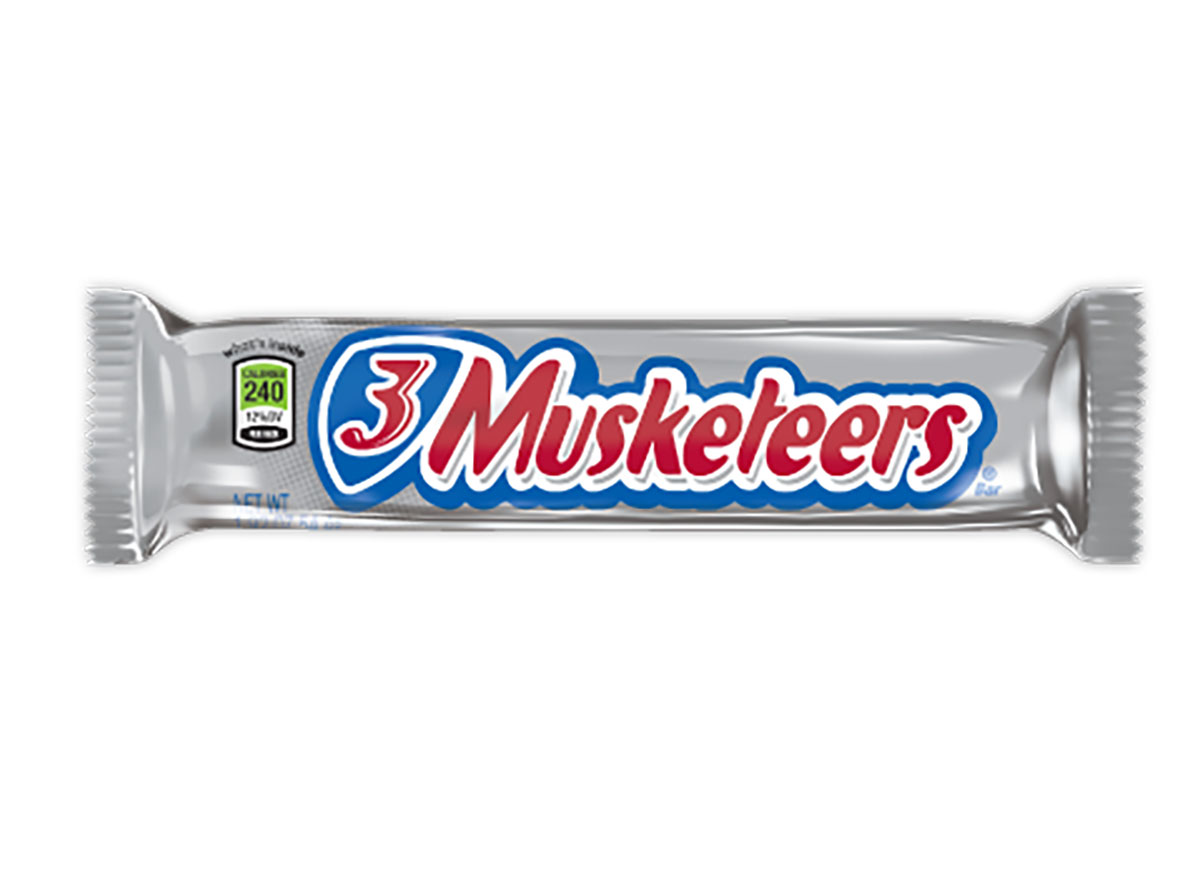
A 3 Musketeers bar is no friend to your health, as it claims the No. 1 spot as the worst candy bar. Although it is slightly lower in calories than a few other contenders on this list, a full-sized 3 Musketeers bar comes in on top as the unhealthiest candy bar thanks to the whopping 36 grams of sugar in one serving. The American Heart Association recommends a maximum of 36 grams of sugar in a day for adult males and 25 grams for adult women, so a single 3 Musketeers bar blows your sugar budget for the day. Now imagine giving this candy bar to a child!

